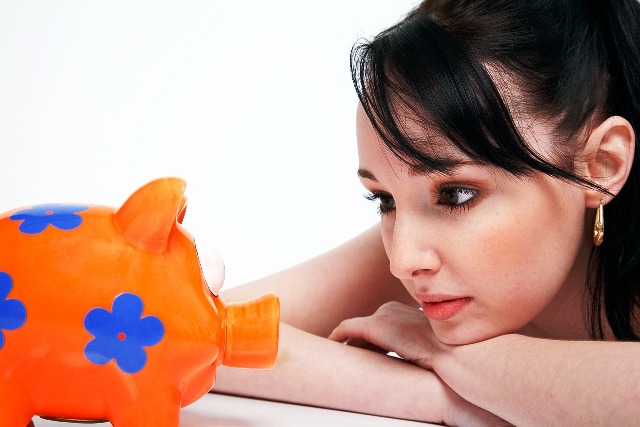“Money is the seed of money, and the first guinea is sometimes more difficult to acquire than the second million.”
Jean-Jacques Rousseau
Inequality and exclusion are two of the most pressing challenges facing the world today. In recent years, policy planners have realized that development will be uneven and not wholesome if we do not address the problem of exclusion of large sections of the population – who remain exiled from the development mainstream ― in a big way.
Inclusive growth is necessary for ensuring that the benefits of a growing economy extend to all segments of society. Providing opportunities to every individual to use his potential for improving his well-being is essential for developing prosperous and stable societies.
Access to and integration into these networks enhances their productivity and leads to shared prosperity. It is now accepted wisdom that a key ingredient of inclusive growth is financial inclusion. Greater financial inclusiveness is a gateway for more balanced development and a more cohesive society. Inclusive growth is widely recognized as having four mutually supporting pillars — an employment-led growth strategy, financial inclusion, investment in human development priorities and high-impact multidimensional interventions (win-win strategies).
Inclusive financial systems have potentially transformative power to accelerate development gains. They provide individuals and businesses with greater access to resources to meet their financial needs, such as investment in education and housing, capitalizing on business opportunities, saving for retirement and coping with various economic shocks.
Access to financial services has a critical role in reducing extreme poverty, boosting shared prosperity, and supporting inclusive and sustainable development is the key element of financial health. In the absence of proper formal financial systems, they have to rely on informal means of managing money, like cash-on-hand, family and friends, moneylenders, pawn-brokers… or keeping it under the mattress! These choices are expensive, insufficient, risky, and unpredictable.
The poor need to set aside money in times of plenty and draw it in lean times. Life is one long risk for them as they are just a tragic event away from a financial catastrophe. Without inclusive financial systems, individuals and enterprises in low income communities lose promising opportunities, have their potential to use their entrepreneurial abilities constricted or have their capital constrained to their own savings and earnings. Managing money is hard, and it’s harder when you live on an earning that makes you plan your life on a day-to-day basis. Limited access to finance is seen as a major contributor to persistent poverty.
Poor people operate almost entirely in the cash economy, particularly in the developing world. They use cash, physical assets (such as jewellery and livestock), or informal providers (such as money lenders and payment couriers) to meet their financial needs. However, these informal mechanisms can be insecure, expensive and complicated to use. Moreover, they offer limited recourse when a major problem arises–such as a serious illness in the family or a poor harvest.
When more people have access to affordable and high-quality financial services, they have more opportunities to thrive. This is especially true for women, who are often underserved by traditional financial institutions. In all societies, howsoever oppressed or illiterate women their women are, they remain the stewards of household savings. They require financial products and services that appreciate their experience and perspective. Financial inclusion of women enhances their self-confidence and places the power of financial decision-making in their hands, resulting in large development payoffs.
Financial inclusion focuses on removing obstacles to the use of these services, whether the obstacles are price or non-price barriers. A number of constraining factors and financial market imperfections, such as information asymmetries and transaction costs impede greater uptake and usage of appropriate financial services. They are likely to be highly imposing on the talented poor and on micro- and small enterprises that lack collateral and documented financial histories which may lead to self-exclusion.
Though we are living in an era of spectacular innovation in financial inclusion, formal financial institutions find it hard to serve low-income customers because of the high costs associated with acquiring and serving them. The small transaction sizes and lower balances in accounts make them a drain on bank’s resources. There is substantial scope to increase access to financial services in rural areas and among low income communities where they remain under-penetrated. Earlier a major challenge was the high cost of delivery through traditional brick and-mortar structures.
Meaningful financial inclusion is very challenging and tough, involving a complex interplay of factors, viable business models and significant behaviour change by new account holders. For certain segments, regulatory frameworks, legal and cultural norms and distance represent significant barriers. We have to be realistic about how long it will take to fully address these challenges.
We now have a whole slew of providers that are beginning to find firm roots. Progress will happen, but certainly just not according to our wishful time frames. Low income people need contextualized and customized services on account of the peculiarities of their financial lives, particularly their irregular/volatile income streams and expenditure patterns.
Dr Moin Qazi is an author, researcher and development professional who has spent four decades in the development sector. He has been appointed a new member of National Institution for Transforming India (NITI) Aayog Committee on Financial Inclusion for Women. He has worked for three decades with State Bank of India as a grassroots field officer, program manager, policy maker and researcher in development finance.
appointed a new member of National Institution for Transforming India (NITI) Aayog Committee on Financial Inclusion for Women. He has worked for three decades with State Bank of India as a grassroots field officer, program manager, policy maker and researcher in development finance.
Views of the author are personal and do not necessarily represent the website’s views.
Thank you for reading the column until the very end. We appreciate the time you have given us. In addition, your thoughts and inputs will genuinely make a difference to us. Please do drop in a line and help us do better.
Regards,
The CSR Journal Team
Subscribe
















